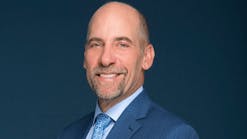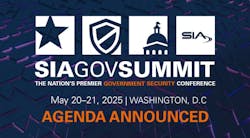How to keep your business and employees afloat during the COVID-19 pandemic
Small businesses navigating the dangerous shoals of today’s uncharted and potentially perilous economy should consider the recently enacted federal economic stimulus program that looks like a loan program but, in reality, is very much an outright government cash grant designed to keep small business employees working until the economy bounces back.
If you need a way to pay your employees for a couple of months but don’t know where the money is coming from or you don’t want to commit strategic cash reserves, this program offers a safe port in this stormy economy.
The "Paycheck Protection Program," part of the recently enacted federal CARES Act, sets aside $350 billion in federal grants for qualifying small businesses. (You can check out the program’s details here.) The program, administered by the Small Business Administration (SBA), applies to businesses or non-profits that employ fewer than 500 employees. Applicants can borrow up to 2.5 times the company’s average monthly payroll for the past 12 months. (The total principal amount of the loan cannot exceed $10 million.) The good news for lenders is that loans under this program are federally guaranteed and many of the usual SBA lending requirements are waived.
The good news for borrowers – as long as the borrower uses the loan proceeds for certain permissible purposes – wages, salaries, rent, mortgage payments and utility payments – the entire principal amount of the loan is forgiven.
To qualify for forgiveness, the loan proceeds can be used for one or more of the following uses:
- Wages, salaries and other payroll costs (excluding compensation to employees earning more than $100,000 a year)
- Costs of group healthcare benefits during periods of sick, medical or family leave or medical insurance premiums
- Mortgage interest payments (but not principal payments)
- Rent
- Utility costs
- Interest on debt obligations incurred prior to February 15, 2020
The borrower must use the loan proceeds for permissible purposes during the eight-week period following loan origination, and the amount of the loan forgiveness is capped at the principal amount (interest payments are not forgiven). Unlike most loans, the loan forgiveness does not impute taxable income to the borrower. Loan forgiveness will be reduced, however, by amounts attributable to a borrower’s reduction in the number of employees, employee compensation or both during the same eight-week period.
The program also waives loan application and other fees, as well as the SBA’s usual lending requirements that the borrower must demonstrate it can’t borrow elsewhere and that the loan be personally guaranteed. Borrowers must certify that the loan is necessary to support the on-going operations of the borrower’s business given the uncertainty of the current economic conditions; that the proceeds will be used retain workers and maintain payroll or make mortgage, lease or utility payments; and the applicant is not receiving another loan under the program. The loans also qualify for certain regulatory relief, meaning lenders will be able to make the loans more easily.
Unlike most loans, these loans are both unsecured (there is no collateral) and non-recourse to the borrower (meaning the borrower is not liable to repay the loan) unless the loan proceeds are not used for permissible purposes. The maximum interest for the loans is 4% and the loans can be prepaid without penalty.
The program also offers compensation to sole proprietors and independent contractors able to document their losses.
This looks very much like a perfect program for small businesses whose business is interrupted by the COVID-19 pandemic where the business wants to pay its employees and keep staff in place in the hopes of a quick start up when we all return to work.
Stay tuned. The act requires the SBA to develop and implement guidelines to administer the program soon.
About the Author:
Eric Pritchard is a partner in FisherBroyles, a law firm with offices throughout the United States and in London. He spends his days trying to make the world safer for the security industry. You can reach Eric at [email protected].



